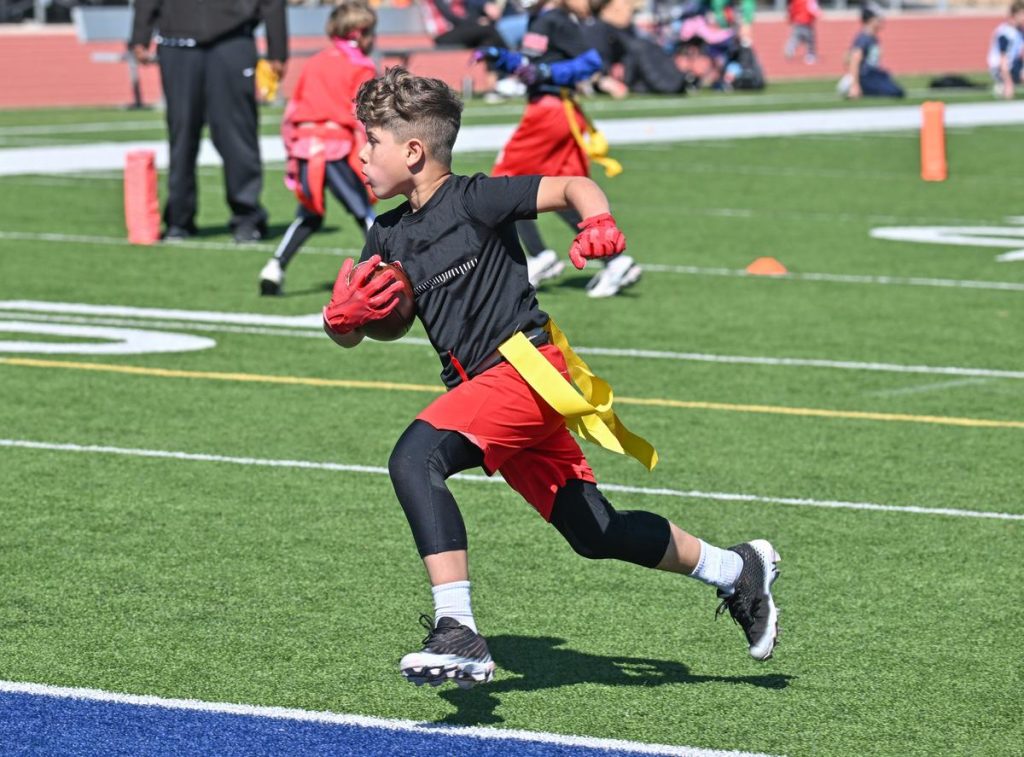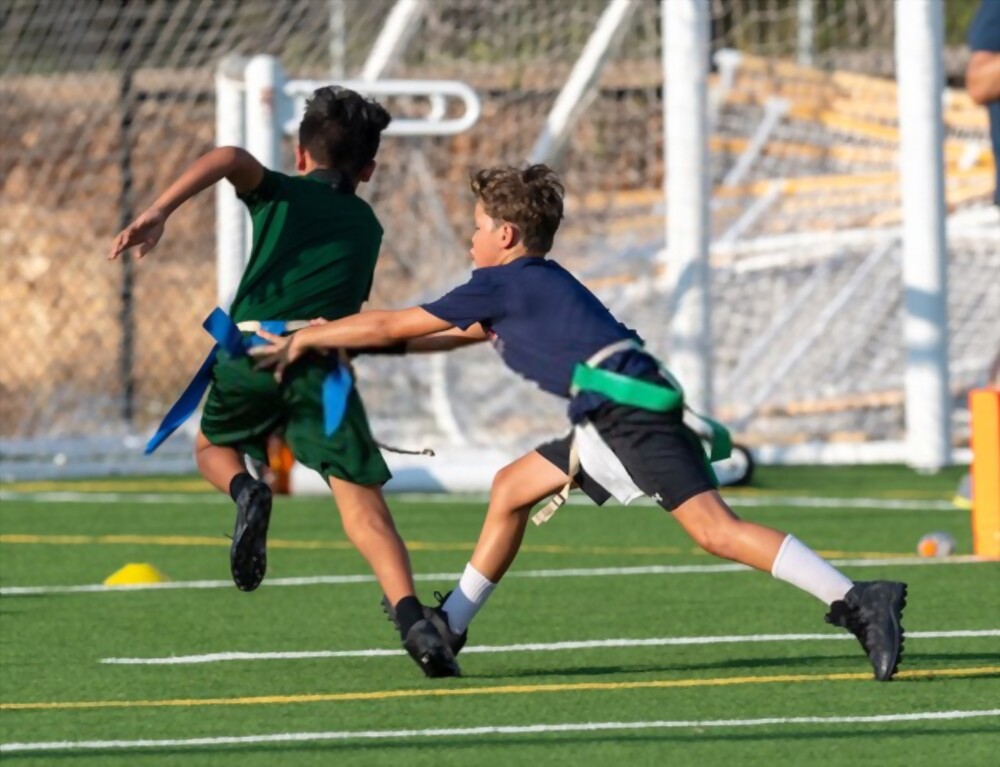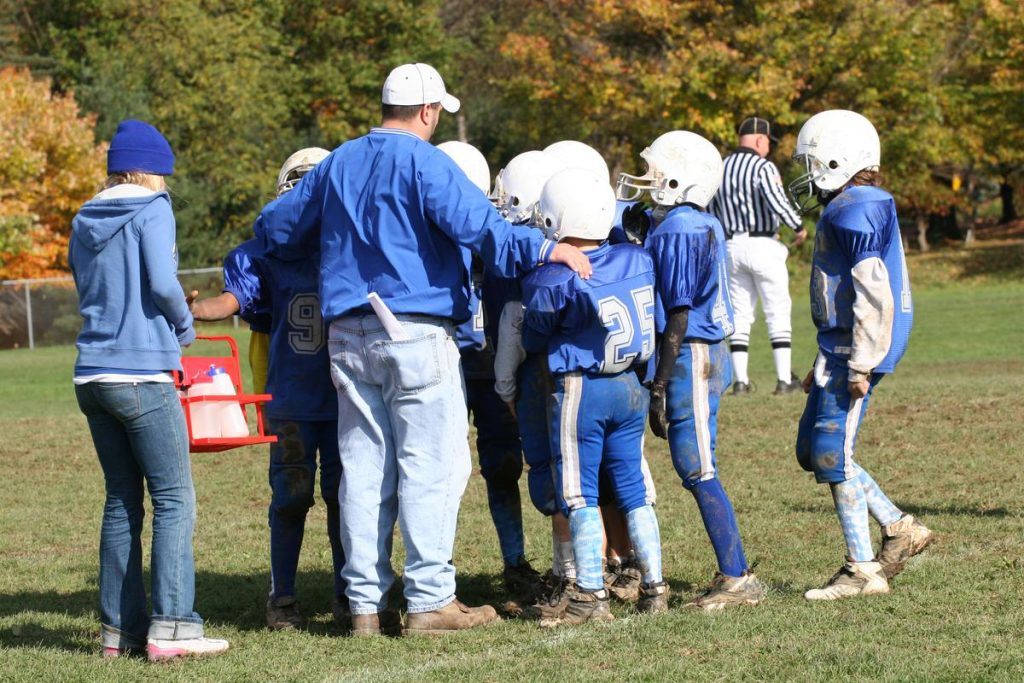Flag football is a popular variation of American football that is played with two teams of five to seven players each. It is a non-contact sport in which players wear flags or belts that are pulled off by the opposing team to stop their forward progress. Flag football is a fun and safe alternative to traditional football, and it can be played on a smaller field with less equipment.
The typical size of a flag football field is 70 yards in length and 30 yards in width, with 10-yard end zones, resulting in a playing area of 50 yards by 30 yards. It’s important to note that while these dimensions are considered standard, there may be slight variations in regulation field sizes.
In this article, we will explore the standard flag football field dimensions and provide some tips for setting up your own field.
Flag Football Field Dimensions
The standard dimensions of a flag football field are 40 yards long and 25 yards wide. This means that the field is 120 feet by 75 feet. These dimensions are smaller than a regular football field, which is typically 100 yards long and 53.3 yards wide.
Related: What Are The American football field goal post dimensions?
Flag Football Field Markings And Their Dimensions

To better comprehend the distinctions between the three official sizes of flag football fields, it is important to familiarize yourself with a few related terms.
Field: The dimensions of a football field, which encompass both the length and width, vary depending on the size of the end zones. The field can measure 70 × 30 yards, 70 × 25 yards, or 64 × 25 yards.
Playing Field: The playing field is the central area of a football game, which excludes the end zones. Its dimensions can vary between 50 yards × 30 yards or 50 yards × 25 yards depending on the specifications of the game.
End Zone: Two scoring areas, known as end zones, are positioned on opposite ends of the field. The width of the end zones varies with the length of the field, with 10-yard-wide end zones in 70-yard-long fields and 7-yard-wide end zones in 64-yard-long fields.
Midfield Line: The midfield line is a line in the middle of the flag football field that separates it into two halves.
No-run zones: In flag football, there are special areas on the field called “no-run zones” where players cannot run with the ball. They have to throw the ball to their teammates instead. This makes the game safer because players are less likely to run into each other and get hurt. The no-run zones are located near the end of the field and are marked with lines, 5 yards in front of each end zone and 5 yards wide from the midfield line toward the end zones in both directions.
Related: Kickball Field Dimensions Complete Guide
Flag Football Rules
Flag football is a version of American football that emphasizes speed, agility, and skill while minimizing the risk of injury that can occur in traditional tackle football. In flag football, each player wears a belt or flag that is attached to their waist with two flags on either side. The objective of the game is to score points by crossing the opposing team’s goal line with the ball, while the defense tries to stop them by pulling one or both of their flags.

The rules of flag football are similar to those of tackle football, with some key differences:
Teams – A flag football team consists of 5, 6, or 7 players, depending on the league and level of play. Each team typically has three downs (attempts) to advance the ball 10 yards down the field.
Starting the Game – The game starts with a coin toss to determine which team will receive the ball first. The team that wins the toss can choose to receive the ball or defer to the second half. The game is started by a kickoff or a punt, depending on the league and level of play.
Scoring – Scoring in flag football is similar to tackle football. Touchdowns are worth 6 points, while extra points can be scored by running or passing the ball into the end zone. A successful extra point is worth 1 or 2 points, depending on the league and level of play. Field goals are not typically used in flag football.
Downs – In flag football, each team typically has three downs to advance the ball 10 yards down the field. If they fail to do so, possession of the ball is turned over to the other team.
Flags – Instead of tackling, players pull one or both flags off of the ball carrier in order to stop the play. If a player loses their flag during a play, they are considered “down” at the spot where the flag was pulled.
Fumbles – If a ball carrier drops the ball or loses possession of the ball in any way, the play is considered dead at the spot where the ball hit the ground.
Rushing the Quarterback – To prevent injury, most flag football leagues have rules that limit the defense’s ability to rush the quarterback. This is typically done by having a “no-rush” zone that extends a certain number of yards from the line of scrimmage. The defense cannot cross this line until a certain amount of time has passed, giving the quarterback time to throw the ball.
Penalties – Penalties in flag football are similar to those in tackle football. Common penalties include offside, holding, pass interference, and unnecessary roughness. Penalties typically result in a loss of yardage or an automatic first down for the opposing team.
Flag Football Strategies and Techniques

Here are some of the most common strategies and techniques used in flag football:
The Screen Pass
This strategy involves the quarterback throwing the ball to a player who is positioned behind the offensive line. This technique is often used to create a distraction that draws the defense away from the intended receiver, allowing the receiver to catch the ball and make a play.
The Hail Mary
This technique is used when a team is behind on points and needs to score quickly. It involves the quarterback throwing a long pass toward the end zone in the hope that one of their teammates will catch the ball and score a touchdown.
The Blitz
The blitz is a defensive strategy in which one or more defensive players rush toward the quarterback with the aim of sacking them before they can throw the ball. This technique is often used to disrupt the opposing team’s offensive play and put pressure on the quarterback.
The Zone Defense
Zone defense is a defensive strategy that involves players covering a specific area of the field instead of a specific player. This technique can be effective in stopping long passes and forcing the opposing team to throw short passes or run the ball.
FAQs
What Are the Dimensions of a 5-Man Flag Football Field?
A 5 man flag football field is typically smaller than a standard football field. The dimensions can vary, but a common size is 30 yards wide by 50 yards long.
What Are the Dimensions of the 7v7 Flag Football Field?
The dimensions of a 7v7 flag football field are also smaller than a standard football field. The size can vary, but a common dimension is 40 yards wide by 80 yards long.
How Many Flags Are There on a Football Field?
There are multiple flags on a football field, but they are not related to the flags used in flag football. In football, officials use yellow flags to signal penalties during the game.
How Many Dimensions Are in a Football Field?
A football field is a two-dimensional playing surface, meaning it has length and width, but no depth. It is typically rectangular in shape.
How Wide Are the Dimensions of a Football Field?
A standard football field is 160 feet wide, including the end zones. However, the width can vary depending on the level of play and the type of field surface. For example, high school football fields may be narrower than college or professional fields.